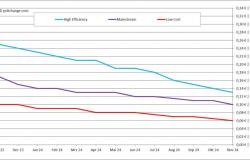This Tuesday, November 26, the Gothiques d'Amiens take the road towards the East to face the Étoile Noire de Strasbourg with the sole objective of qualifying for the quarter-finals of the Coupe de France.
For the third time in four days, the Gothics of Amiens will play a match far from their base. After stopping in Marseille and Angers for Ligue Magnus matches, Mario Richer's men, who spent the night in the Picardy capital, hit the road this Tuesday morning towards Strasbourg for the knockout stages of the Coupe de France. France.
As hoped by Mario Richer, Jesper Larinmaa and Clément Fouquerelwho were on the ice for one last practice before starting, rejoined the group. If Janis Svanenbergs is not fit, the Slovenian Kristjan Cepon has not received the green light to return to competition. Two returns to the lineup which will do a lot of good before coming up against the Black Star of Strasbourg. The Amiens coach is wary of this Alsatian team and knows that it will not be an easy match: “It’s a very good team, they have had good results recently (three consecutive victories, editor’s note) and are well placed in the rankings. […] It's a very fast and structured teamthey have a good numerical advantage, so you will have to be disciplined and well in the system by putting a lot of pressure. »
After a somewhat difficult week with three losses against Grenoble (1-6), Marseille (5-4, ap) and Angers (5-0) and 16 goals conceded on these, the Gothics must reassure themselves against Strasbourg before a double confrontation against Anglet which could put them back in the saddle. Whatever happens, the Samarians will have to do what is necessary this Tuesday evening to avoid an unpleasant surprise. For Mario Richer, “We will have to play our best game to win. Plus, on the road, it's never easy. You will need to be mentally and physically ready to face a team that will play its match of the year. For us too, it’s our match of the year. » After having dismissed Courbevoie for its entry into the running, Amiens is playing for its place in the quarter-finals this Tuesday evening with only victory in mind: “In the Coupe de France, you have to win every match, the math is easy. »
Coupe de France, 1/8th final
Strasbourg (D1) – Amiens (Magnus League)
César Willot
Photo credit: Kevin Devigne – Gazettesports.fr







